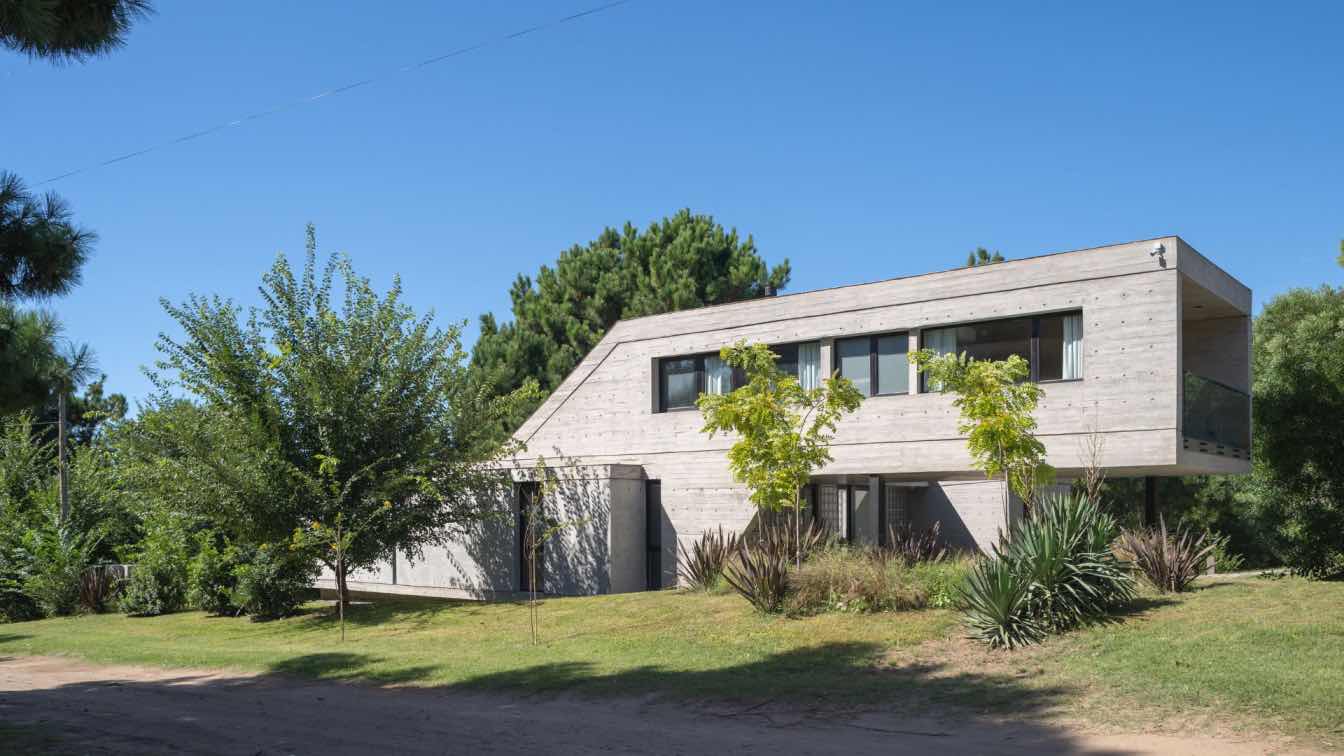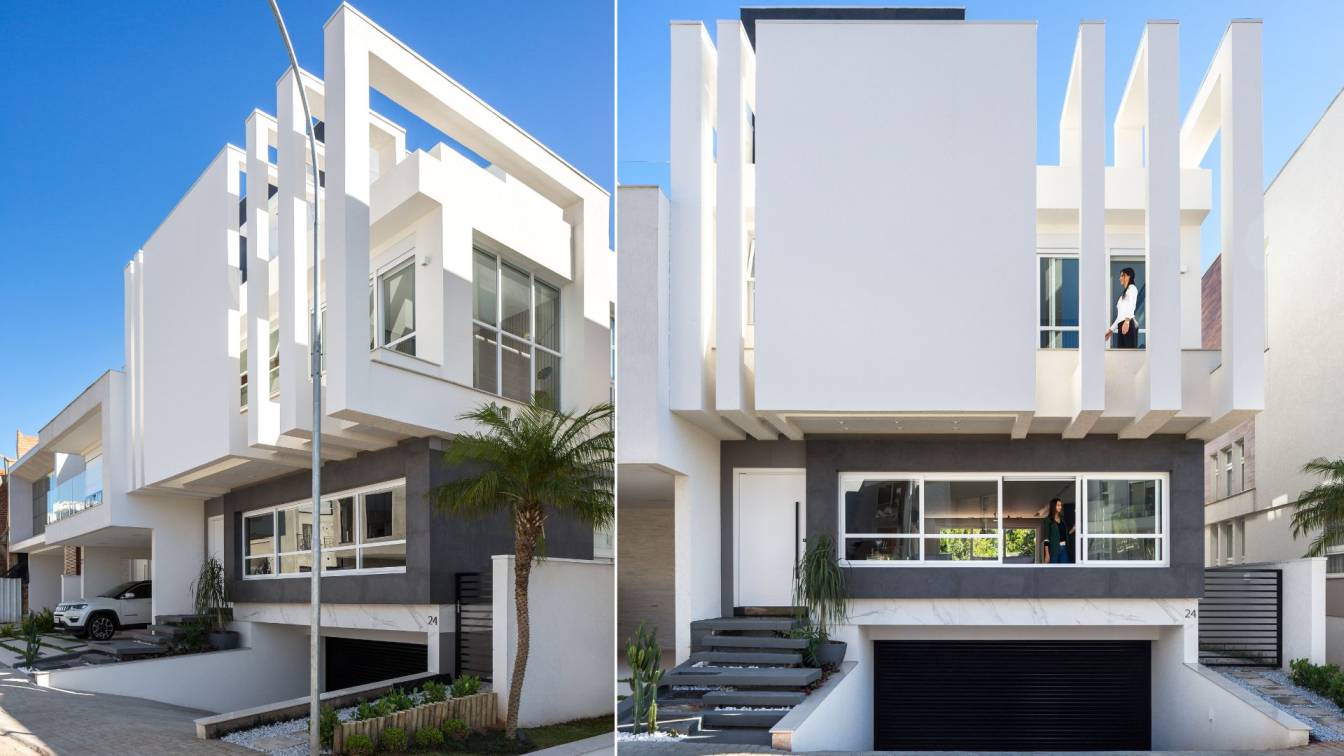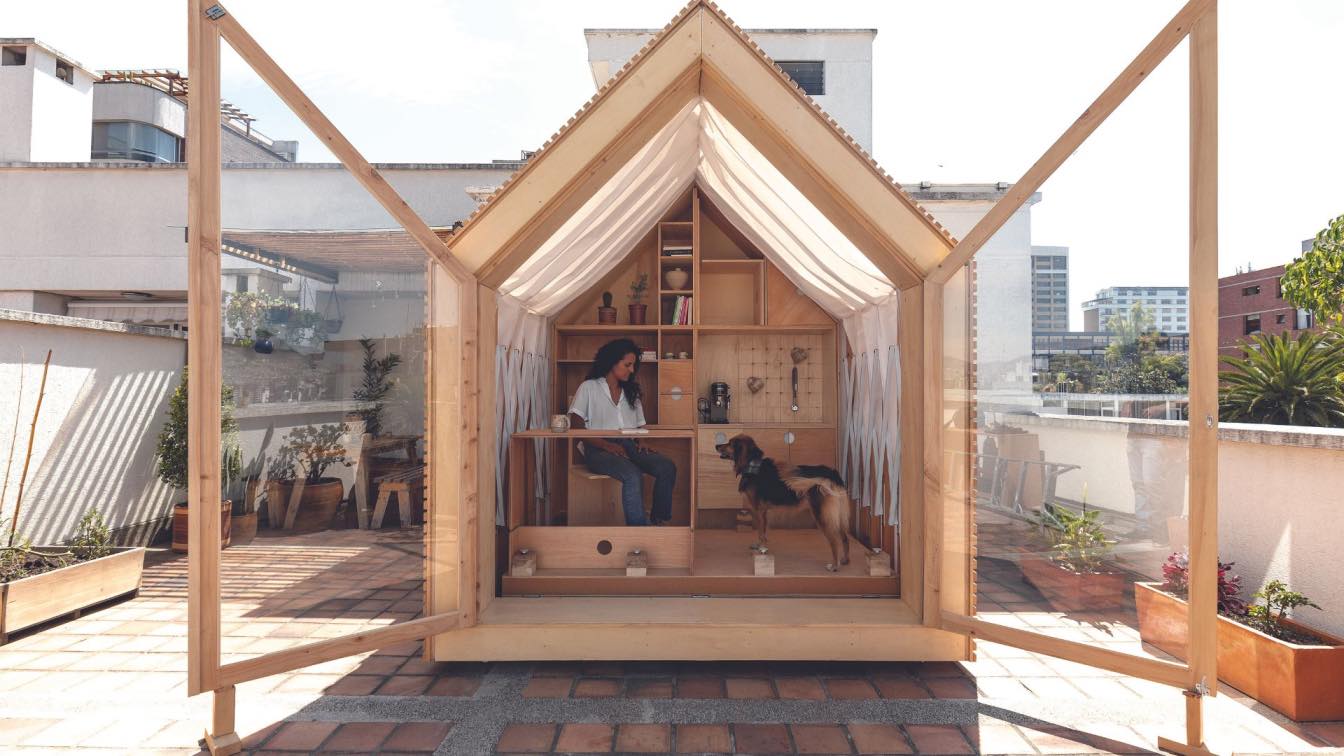Estudio Galera Architecture: House Three is part of a larger complex which has gradually being built for the same family over time. It is the third of a total of six residences planned in 2016 through a master plan that encompasses not only housing but also amenities and green spaces at the center of the complex.
Set in a block near the sea, the dwelling rests on the blurred boundary between Ostende–the most densely populated area of the city and mostly occupied by the working class- and Mar de Ostende, a tourist area which acts as a bellows between the sea and the city itself. A border or edge condition among these two areas is generated not only in terms of the perception of security and privacy but also in the clash between the ‘rushed life’ of workers and the ‘slow world’ of those who are on vacations.
From a topographic perspective, the lot features a slope of 3.00 more from the street at the front and the rear section of the lot; a conditioning factor that adds to the ‘self-restriction’ of the Master plan, where the center of the block is designated as an expansion space. Therefore, closing off to the streets and opening up to the green space entails closing the house to the West, which means losing sunlight inside the dwelling but recovering it in outdoor uses in a park that multiplies sixfold. Since this is a rental property, House Three has to be versatile enough to host a different generic user every week and designed in a way that can be segmented and divided into two in order to accommodate a family and a couple simultaneously. In this sense, ambiguity and flexibility are key.
This third house is projected as a succession of the previous ones, following the same construction logics such as the use of noble materials and replacing the common brick used in the first two units with exposed concrete. This third version of the extended program is consistent with the conceptual lines that originated the ensemble: simple execution with local labor and minimal maintenance. By sharing spatial explorations and dimensional relationships with the pre-existing houses, a dialectic connection is established, in which they are all assimilated in formal terms but contrasted in their materiality. House Three, like the previous ones, is designed using a scarce catalogue of materials: reinforced concrete, glass bricks, aluminium, glass and cement blocks stacked horizontally to serve as visual filters rather than load-bearing elements.

The floor plan is divided into two inhabitable units that can function either as a single dwelling or be divided into two according to demand. This ‘bi-nuclear’ floor allows for the separation of the master bedroom on the ground floor to create an independent single-room unit or be part of the rest of the house alongside the main volume which nests the public uses on the ground floor and two bedrooms and a studio that overlooks the living-room on the upper floor. This generates unique spatial relationships not present in the other houses of the complex.
The house is lifted off the ground protecting the walls from ground moisture. The outdoor spaces in the volumes open onto the natural courtyard formed by the setbacks and backyards of the six lots. The natural slope of the plot turn these expansions into lifted terraces open to the interior garden. A place for the contemplation of nature is thus generated within the large communal space at the centre of the block, where birds and the flora planted by the owners’ parents forty years ago take central stage.
Rainwater is directed to large gargoyles that pour it into infiltration wells, producing sounds that together with the scent of wet grass and the singing of birds create a pleasant spectacle only perceptible from the house. Over time, it is confirmed that the presence of the house and its occupants do not alter the original characteristics of the site.





































































